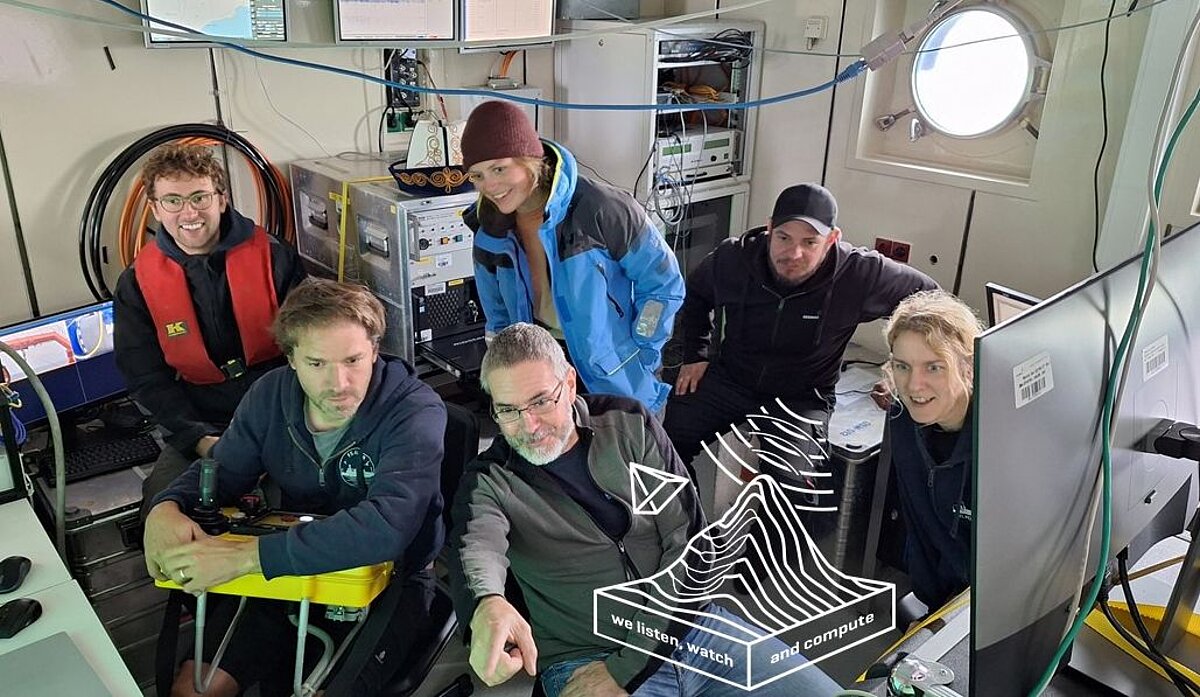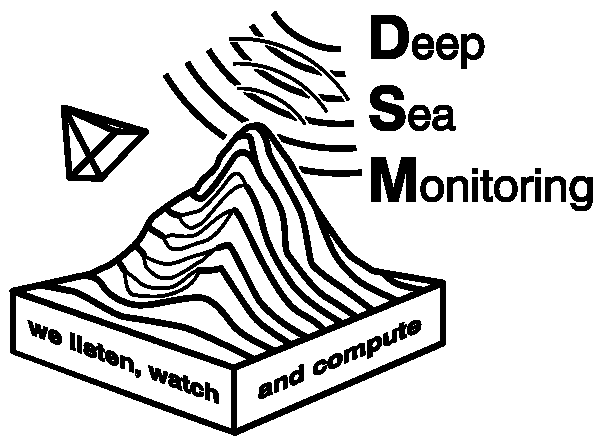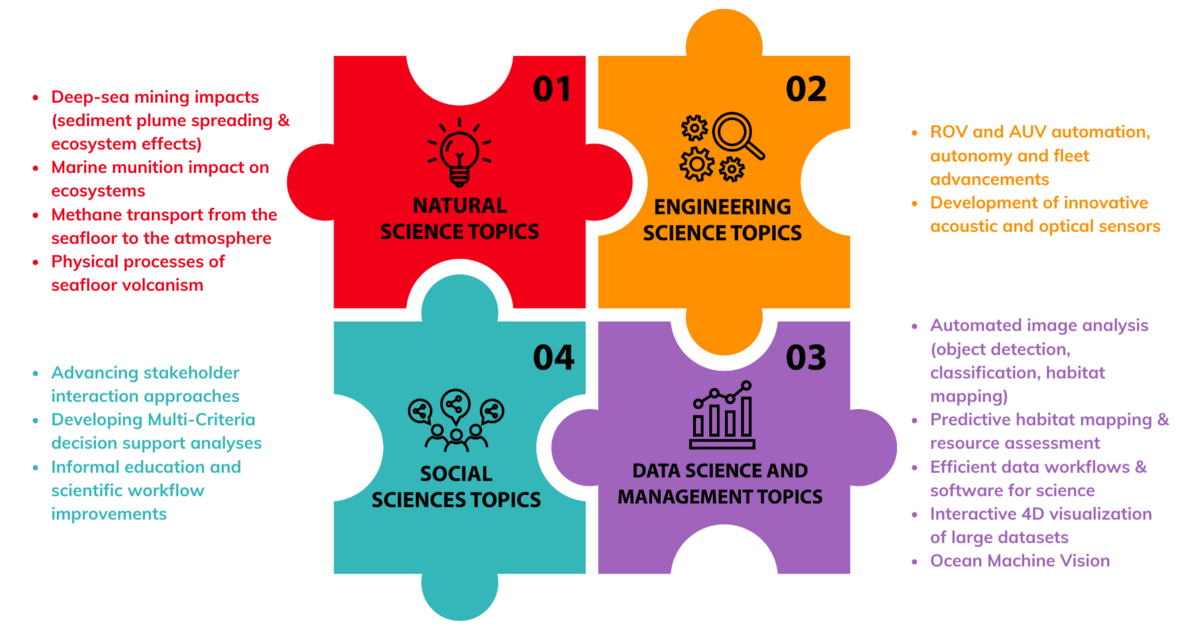The DSM working group established beginning of 2013 by one of the first positions funded through the Helmholtz Distinguished Professorships, awarded to Jens Greinert. Since then the group grew to about 25 people which are active in national and international projects, often being the partner coordinating these projects. The group is working on natural science questions, engineering and data science topics and social science aspects including multi-criteria analyses for decision making. We are developing and advancing marine tools and equipment, write standalone software, engage in data management issues as well as outreach activities. All this is imbedded in Research Topic 6 and specifically in Sub-Topic 6.4 “Use and misuse of the ocean: Consequences for marine ecosystems” of the current POF IV. DSM works on different natural science questions with a focus on seafloor observations using hydroacoustic and optical systems. Various platforms as towed and stationary landers, ROVs and AUVs with a multitude of sensors are used; we are mapping and observing the seafloor of oceans and seas and for this “we listen, watch and compute”.
Please check our more detailed descriptions of software products, working methods and equipment, the list of past and current projects and of course our publications.
Get in contact with us (dsm(at)geomar.de) if you are interested in what we are doing or look for help/advise in using similar technology, want to learn about underwater navigation or hydroacoustic mapping, or are in need in GIS-based data analyses, image AI applications or good ways for stakeholder engagement and decision-making support.





